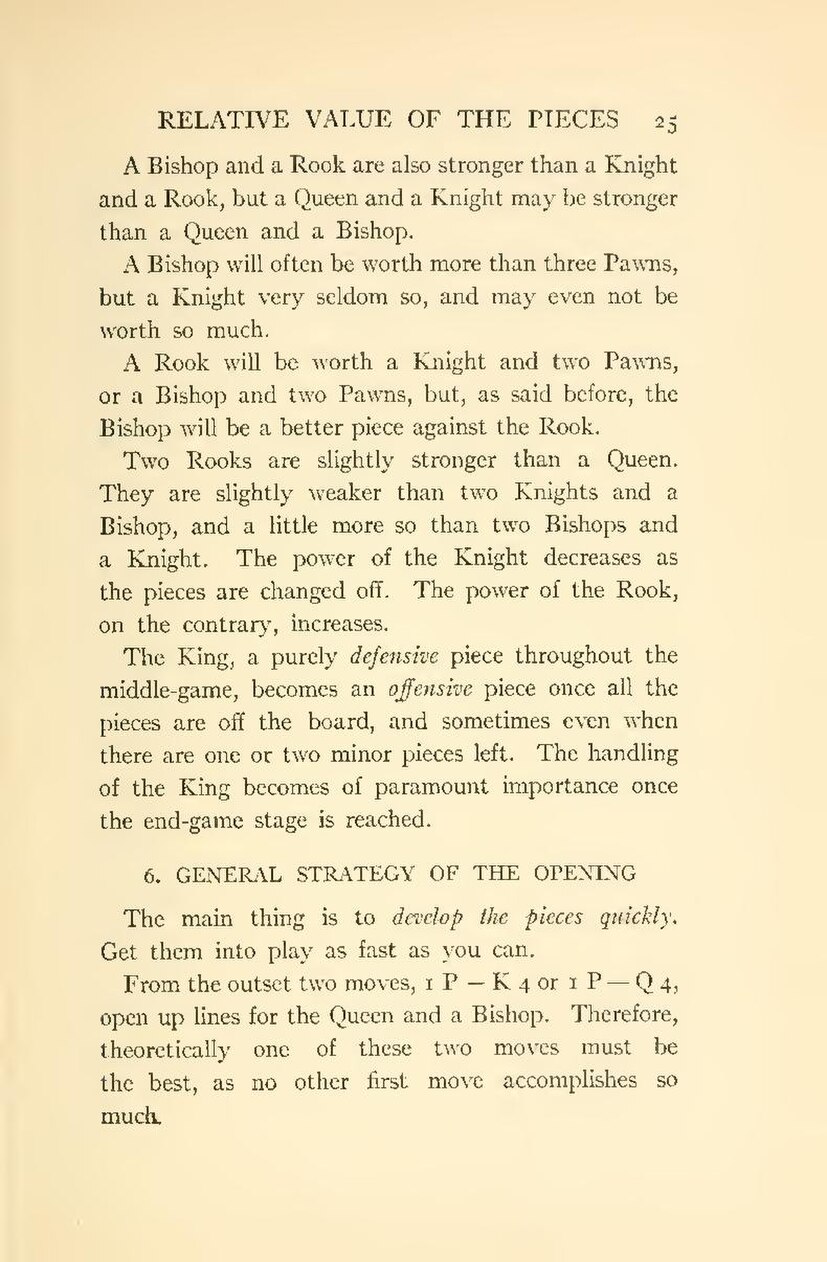A Bishop and a Rook are also stronger than a Knight and a Rook, but a Queen and a Knight may be stronger than a Queen and a Bishop.
A Bishop will often be worth more than three Pawns, but a Knight very seldom so, and may even not be worth so much.
A Rook will be worth a Knight and two Pawns, or a Bishop and two Pawns, but, as said before, the Bishop will be a better piece against the Rook.
Two Rooks are slightly stronger than a Queen. They are slightly weaker than two Knights and a Bishop, and a little more so than two Bishops and a Knight. The power of the Knight decreases as the pieces are changed off. The power of the Rook, on the contrary, increases.
The King, a purely defensive piece throughout the middle-game, becomes an offensive piece once all the pieces are off the board, and sometimes even when there are one or two minor pieces left. The handling of the King becomes of paramount importance once the end-game stage is reached.
6. GENERAL STRATEGY OF THE OPENING
The main thing is to develop the pieces quickly. Get them into play as fast as you can.
From the outset two moves, 1 P - K 4 or 1 P - Q 4, open up lines for the Queen and a Bishop. Therefore, theoretically one of these two moves must be the best, as no other first move accomplishes so much.
